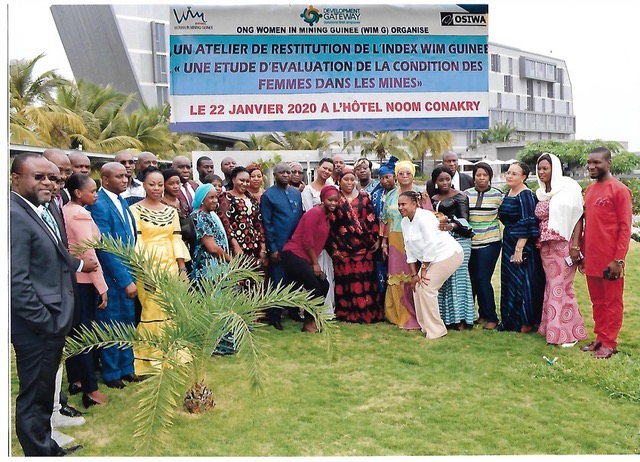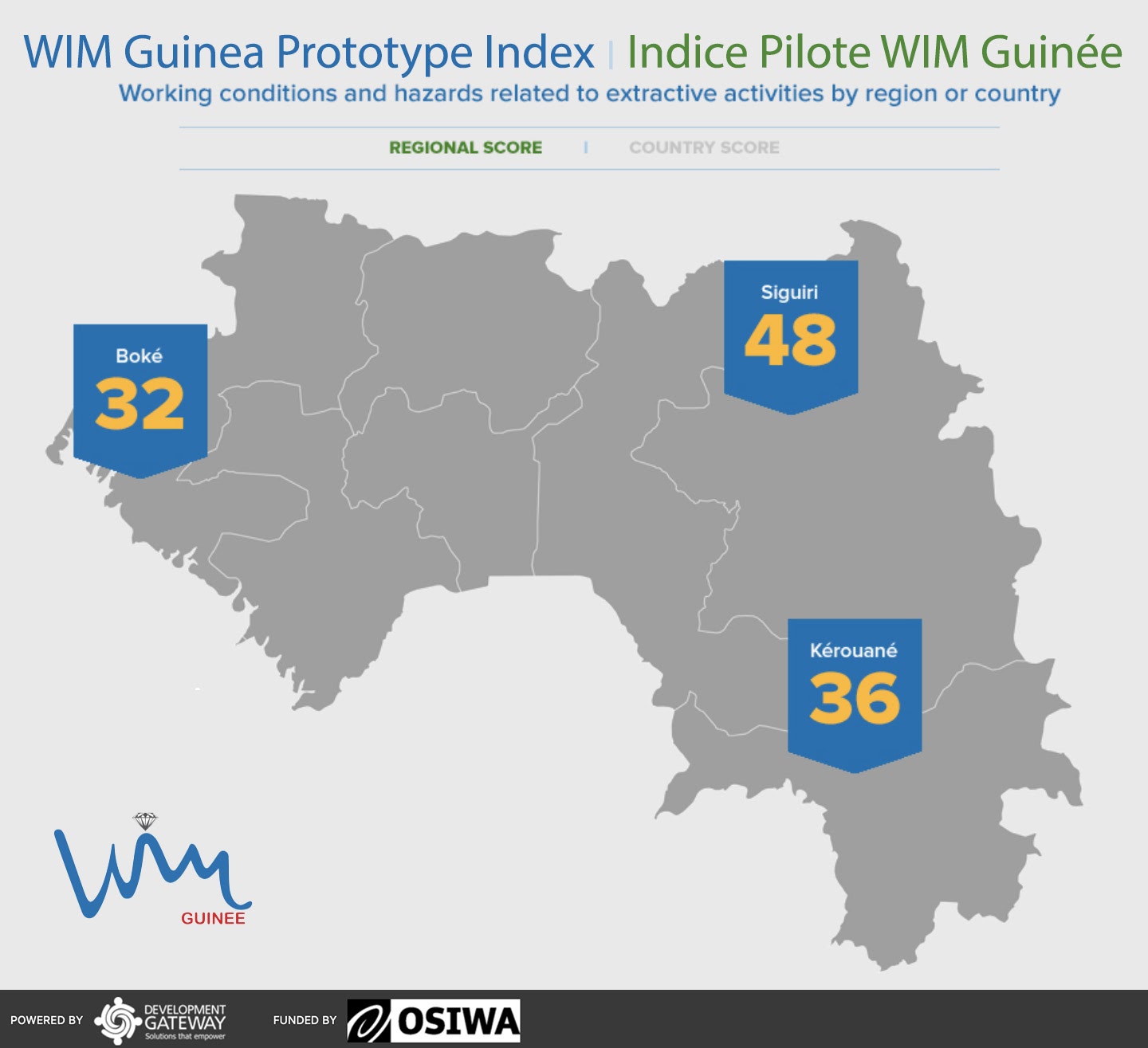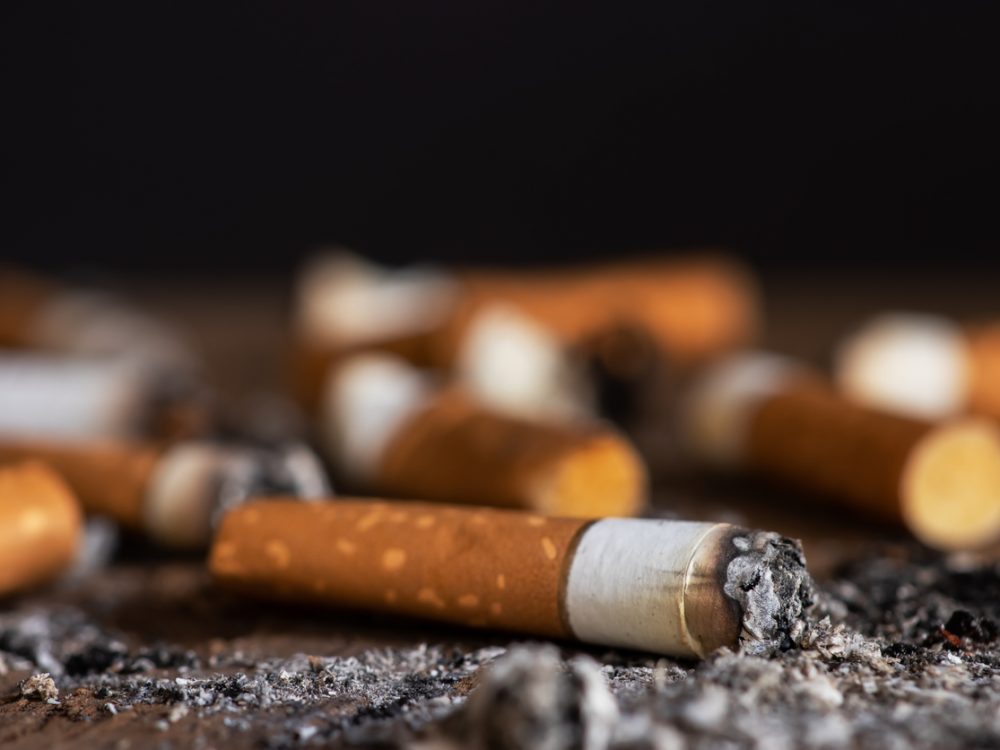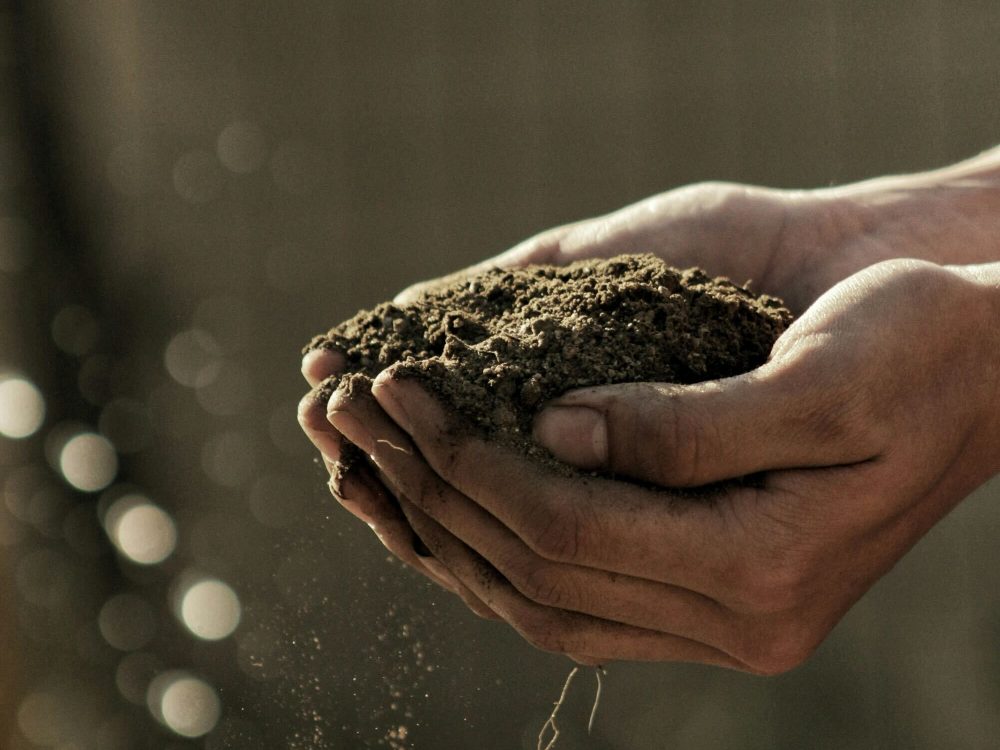A Prototype for Tracking Women’s Inclusion in the Extractives Industry: Launch of the WIM Guinea Pilot Index // Un Baromètre de Suivi de l’Inclusion des Femmes dans les Industries Extractives : Lancement de l’Indice Pilote de WIM Guinée
Last week in partnership with Women in Mining (WIM) Guinea and the Open Society Initiative for West Africa (OSIWA), we celebrated the official launch of the WIM Guinea Index prototype.
At the January 22nd WIM Guinea Index launch ceremony, participants from across the Guinean mining sector gathered to build familiarity with the prototype index, learn about DG’s prototype development process, and identify ways that the WIM Index could be extended into a country-wide model.

Figure 1: Celebrating the launch of the WIM Index in Guinea
Less than a year ago, we met with WIM Guinea while assessing Guinea’s ecosystem for extractives industry (EI) data use. During our interview, WIM Guinea asked,
“We have an Index for Poverty and other topics, why not one for women?”
In Guinea, mining is a significant piece of what drives the national economy – it is the main source of the country’s export and tax revenues. As women make up more than 51% of Guinea’s total population, their role in the mining and extractives industry should follow suit. However, women’s lives in mining areas remain difficult. At the enterprise mining level, they rarely have access to jobs, training opportunities, or managerial positions. In the artisanal mining sector, socio-cultural burdens prevent women from expressing their needs and enjoying economic opportunities.
An understanding of this context led WIM Guinea and Development Gateway (DG), in partnership with funder OSIWA, to develop an Index that provides a clear perspective on what hinders women’s involvement in the mining sector, fuels local and national conversation, and promotes decision-making towards sustainable solutions. The WIM Index can also be used to monitor progress in improving women’s living conditions in mining communities. Moving forward, we aim to support the community in Guinea to use the Index to identify and implement gender-based national policies, enable CSOs to integrate gender considerations into their advocacy strategies, and help technical and financial partners build action plans that prioritize women.
Gender considerations are not limited to increasing the number of women working in mining companies, sitting on boards of directors, or owning mining titles. Tackling gender issues and achieving equity takes on much broader and cross-cutting dimensions – the main assumption that underlined DG’s approach and methodology – which included indicators to reflect women’s representation and power in the private sector and within the communities.
Our partner, WIM Guinea, was instrumental in collecting the data sufficient to complete the Index. To develop the tool, we worked closely with WIM Guinea to understand local needs – especially important in the complex and nuanced extractives industry. DG knows that working closely with local partners is key to solution sustainability.

In continuing to collaborate with WIM Guinea, we hope to scale the tool to a country-wide model, building tools that actually serve the needs of citizens. but one that can be replicated in other countries. The region can build on the success of a more inclusive, informed, and open extractives industry in Guinea, contributing to a WIM Africa index. The WIM Index is adaptable based on different context, priorities, and needs. With success in Guinea, we look forward to the possibility of a scaled-up tool that will include additional countries and indicators.
Thank you to our partners WIM Guinea and OSIWA for helping achieve the Index – and we look forward to sharing more in the coming weeks and months!
_________________________________________
Un Baromètre de Suivi de l’Inclusion des Femmes dans les Industries Extractives : Lancement de l’Indice Pilote de WIM Guinée
En partenariat avec Women in Mining (WIM) Guinée et Open Society Initiative for West Africa (OSIWA), nous avons procédé au lancement officiel de l’Indice Pilote de WIM Guinée le 22 janvier 2020 à Conakry.
Lors de la cérémonie, les acteurs du secteur minier guinéen se sont réunis pour se familiariser avec l’indice prototype, en apprendre davantage sur son processus de développement et identifier les moyens d’étendre l’indice WIM à un modèle national.

Figure 1: Lancement de l’Indice Pilote WIM Guinée
Cette opportunité s’est présentée à Development Gateway il y a environ un an, au cours d’une de nos études, WIM Guinée nous a fait part d’une idée:
« Nous avons un indice de pauvreté ainsi que des indices portant sur d’autres sujets, pourquoi pas un pour les femmes? »
Les femmes représentent plus de 52% de la population totale du pays. Si l’exploitation minière est la principale source des recettes fiscales et d’exportation du pays, les femmes et les filles des zones minières vivent dans des conditions de vie généralement difficiles et de désavantage : au niveau de l’entreprise, elles accèdent rarement aux emplois, aux formations, ou aux postes de responsabilité; dans le secteur artisanal, elles jouissent très peu d’opportunités économiques notamment en raison des pesanteurs socioculturelles et des stéréotypes.
La compréhension de ce contexte a conduit WIM Guinée et Development Gateway (DG), en partenariat avec OSIWA, à élaborer un indice pilote capable de mieux comprendre les obstacles qui freinent l’implication des femmes dans le secteur minier, d’alimenter les débats et enfin d’orienter la prise de décisions vers des solutions durables. L’indice WIM peut également être utilisé pour suivre les progrès réalisés dans l’amélioration des conditions de vie des femmes dans les communautés minières. L’Indice Pilote WIM Guinée ambitionne d’être utilisé pour identifier et mettre en œuvre des politiques nationales inclusives du genre, permettre aux OSC d’intégrer les considérations de genre dans leurs stratégies de plaidoyer et aider les partenaires techniques et financiers à élaborer leurs plans d’action.
Les considérations de genre ne se limitent pas à augmenter le nombre de femmes qui travaillent dans des sociétés minières, siègent à des conseils d’administration ou possèdent des titres miniers. Les questions de genre et la réalisation de l’équité prennent une dimensions beaucoup plus large et transversale – l’hypothèse majeure qui a soutenu l’approche et la méthodologie de DG qui introduit des indicateurs capables d’avoir un meilleur aperçu de la représentation et de l’autonomisation des femmes dans le secteur privé et au sein des communautés.
Notre partenaire, WIM Guinée, a joué un rôle déterminant dans la collecte des données et a su soumettre un volume suffisant pour calculer l’Indice Pilote. WIM Guinée a également était un atout principal dans la compréhension du contexte et des enjeux complexes et nuancés du secteur minier. La collaboration avec des partenaires locaux est un pilier de notre vision et, souvent, la clé de l’appropriation et de la pérennisation de nos projets.

L’Indice Pilote WIM Guinée été conçu pour donner un aperçu de ses différentes possibilités. Nous espérons mettre l’outil à l’échelle du pays, pour mettre à la disposition des acteurs du secteur des informations exhaustives et fiables à travers un outil qui répond réellement aux besoins des citoyens. L’indice Pilote WIM Guinée est adaptable à des contextes, à des priorités et à des besoins différents. Avec le succès obtenu en Guinée, nous espérons pouvoir l’étendre à d’autres pays.
Merci à nos partenaires WIM Guinée et OSIWA. Nous partagerons plus d’informations sur le processus dans nos futurs blogs!
Share This Post
Related from our library

Economic Toll of Tobacco-Related Diseases in Kenya: New Research Findings
Development Gateway: An IREX Venture (DG) is pleased to announce the publication of a research manuscript on the Economic Costs of Tobacco-Related Illnesses in Kenya. This research was carried out as part of the Tobacco Control Data Initiative (TCDI) activities in Kenya and is part of a broader report on Morbidity and Mortality from Tobacco Use in Kenya.

Launching a Partnership Matching Service for Nonprofits
While a lot of us have talked about the potential, value, and – in some cases – need for more mergers and acquisitions in the non-profit space, recent events have made it clear: now is the time. That’s why the teams at Accountability Lab, Development Gateway: An IREX Venture and Digital Public, partnered up to develop both a new toolkit, a partnership matching service, and professional support infrastructure aimed at assisting the organizations facing this challenge.

Unlocking Africa’s Agricultural Potential: Introducing the Soil Nutrient Roadmap
For over a decade, Development Gateway: An IREX Venture (DG) has been at the forefront of digital agriculture, leveraging agricultural data to support input monitoring, value chain analysis, and farmer-centric governance models. With funding from the Gates Foundation, DG is launching the Soil Nutrient Roadmap (SNR), a cutting-edge initiative using geospatial data to estimate current and future soil and crop nutrient requirements.